Co-creation of transformative narratives for just and sustainable futures in the Xochimilco peri-urban wetland
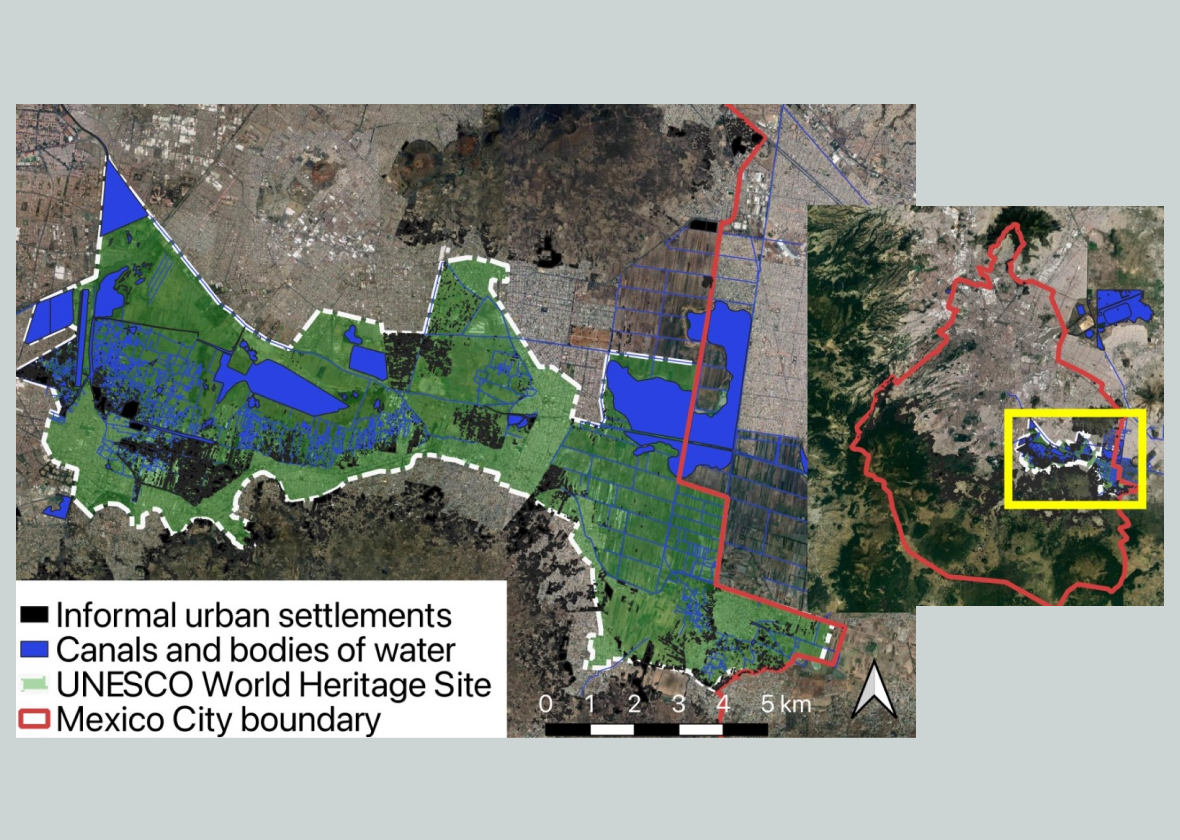
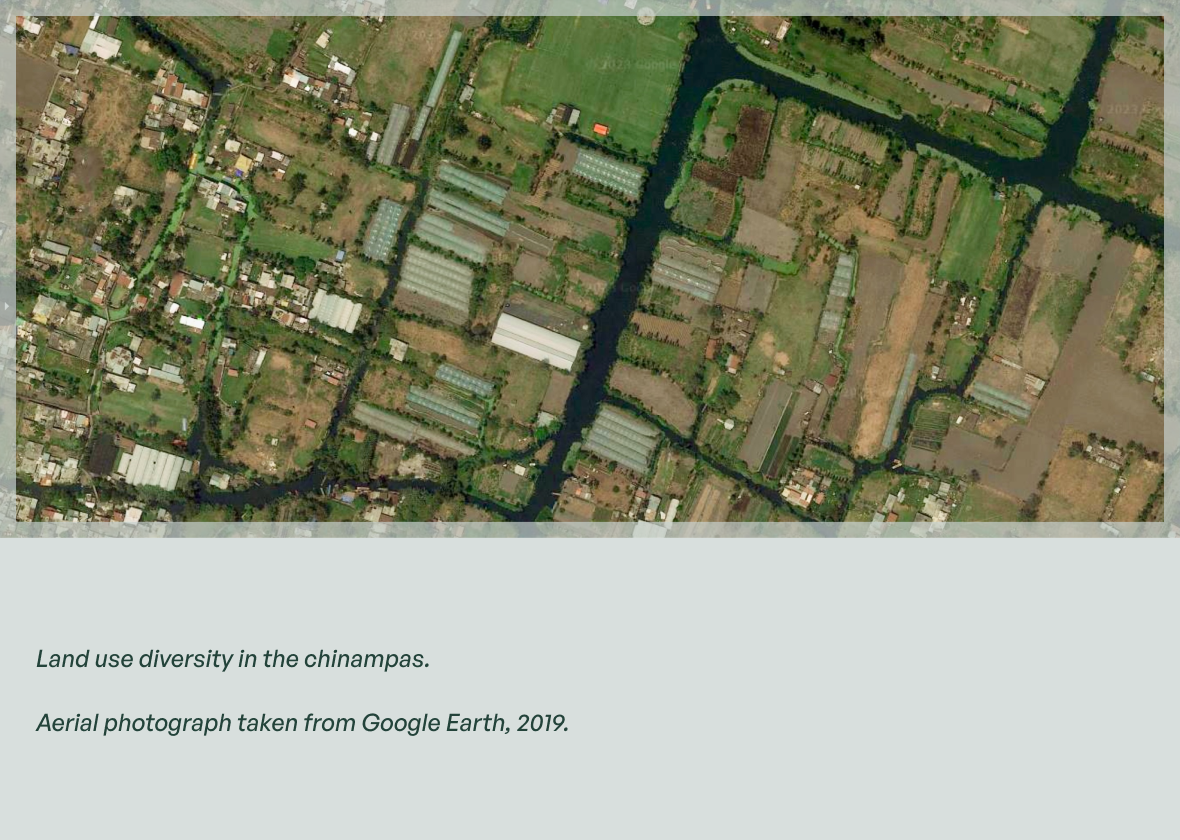
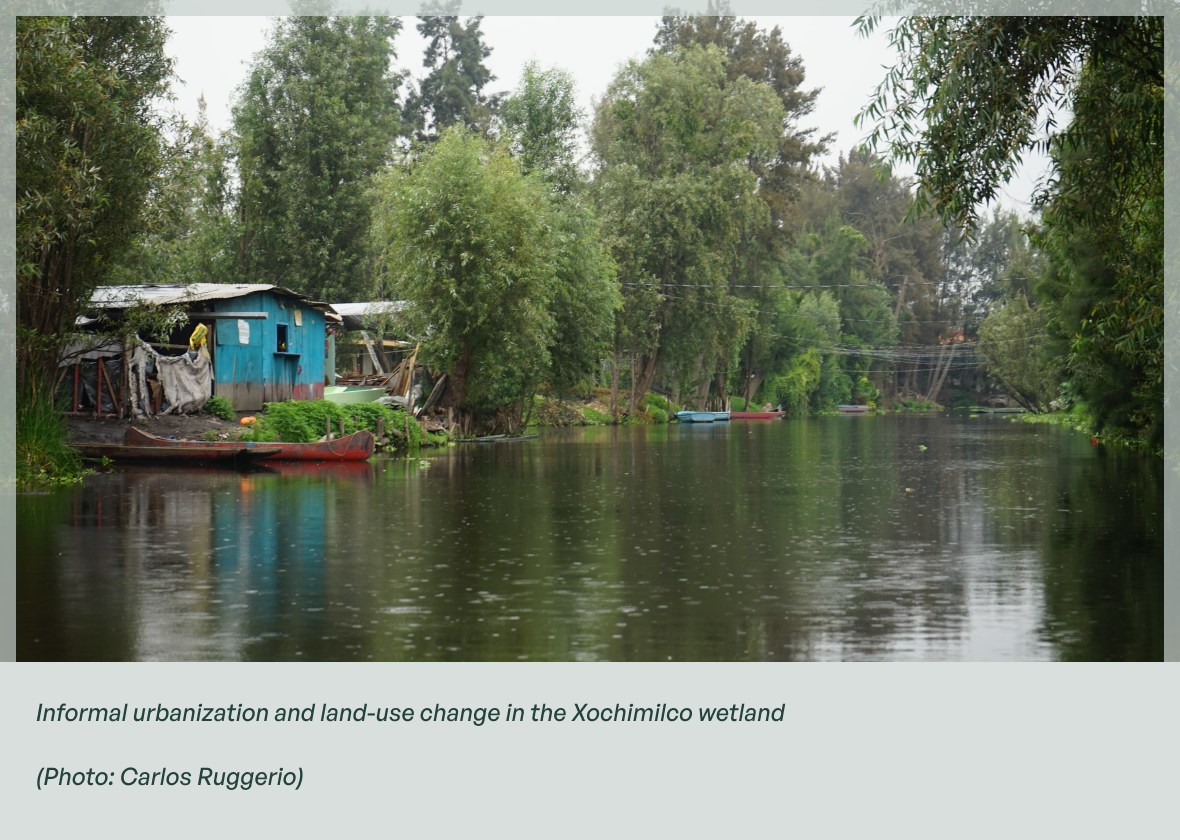
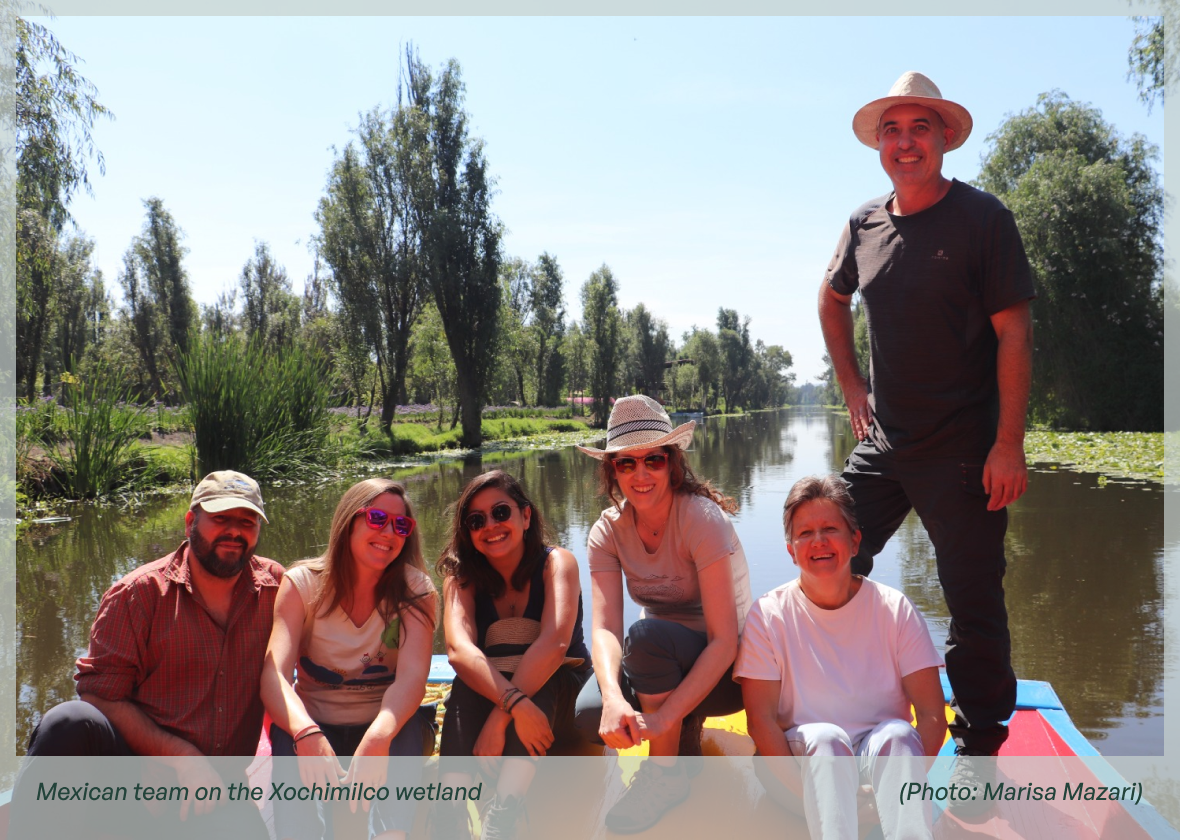
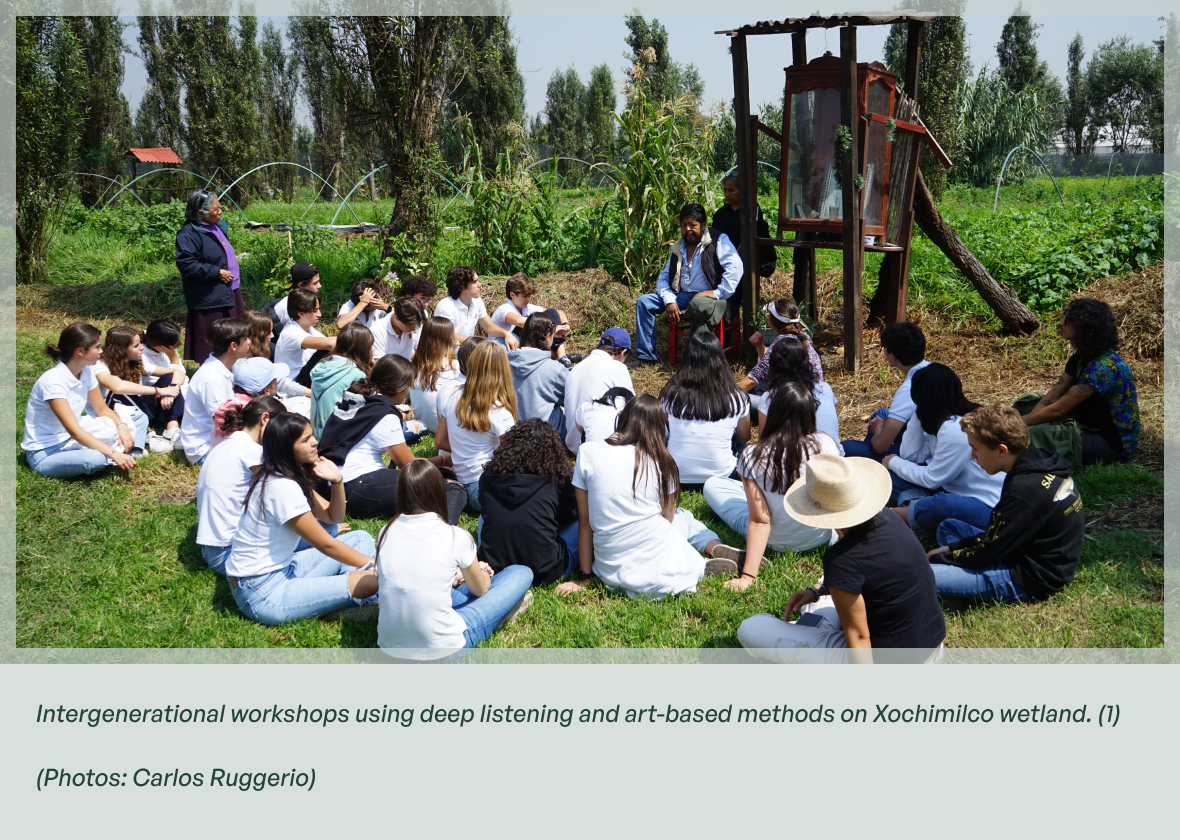
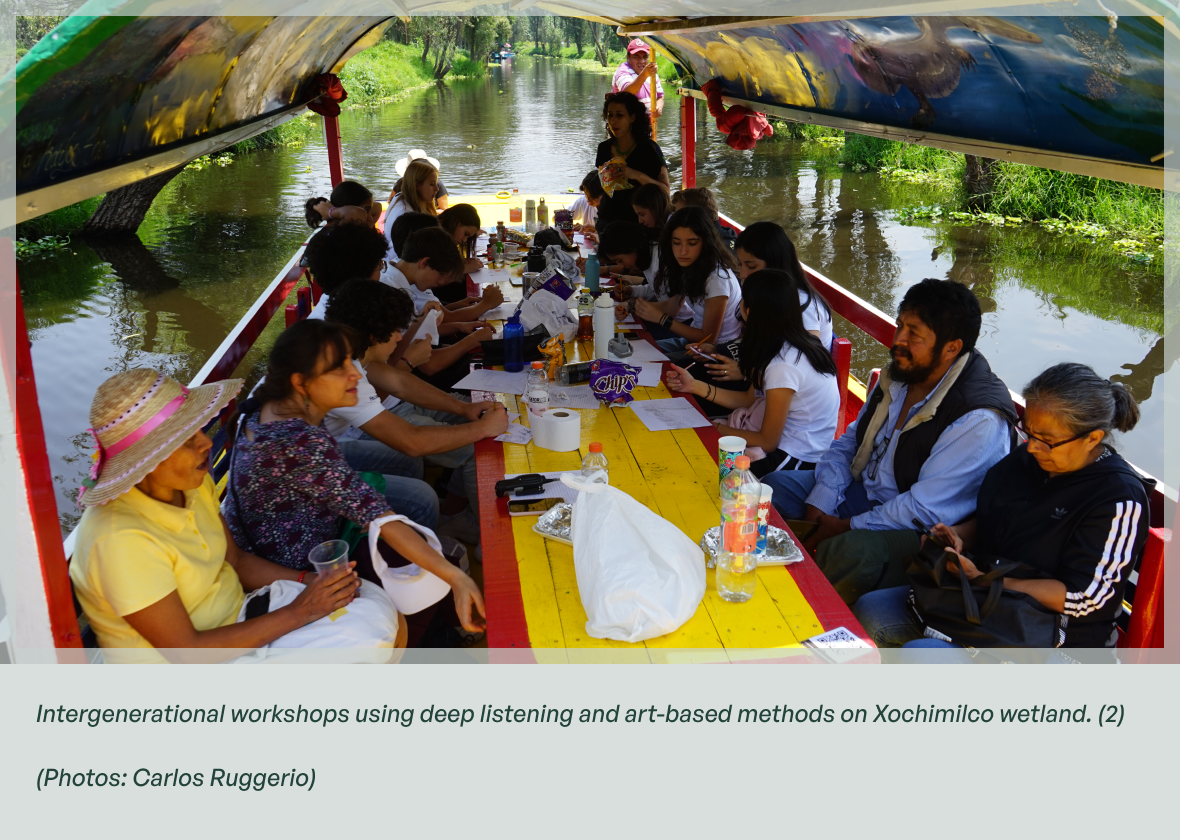


An entangled and messy, yet wonderful system
The Xochimilco peri-urban wetland, located in southern Mexico City, represents one of the last remnants of the original pre-Hispanic lake system of the Basin of Mexico.
As other wetlands around the planet, this social-ecological system is rich in culture and biodiversity and has been named a World Heritage site for the United Nations Educational, Scientific and Cultural Organization (UNESCO) and an Agricultural Heritage System of Global Importance for the Food and Agriculture Organization (FAO).
The wetland has been managed since pre-Hispanic times to carry out agricultural activities in “floating garden plots” called chinampas, where food crops are still being grown to supply the city’s inhabitants. This site is key to urban food security, a source of jobs, and as living cultural heritage, while providing other benefits for the city including climate regulation, water storage and recharge, groundwater supply, biodiversity protection and tourism.
As Mexico City has rapidly expanded over time, urbanization of the wetland has generated increasingly complex social dynamics and landscape fragmentation.
Despite diverse efforts to preserve Xochimilco wetland, today it is in a state of environmental degradation, coupled with an eroded social fabric. For example, in terms of hydrology, water is extracted from wells on the periphery of the wetland to supply water to the city, which has caused not only the springs to dry up but also city-wide subsidence problems.
To maintain canal levels primarily for tourism (not explicitly for agriculture), the city's water system supplies treated wastewater to the wetland. These infrastructural elements and decisions favoring the city have generated functional changes in the wetland as a system that was primarily agricultural.
Furthermore, sociopolitical dynamics play a crucial role in this complex situation. Due to inadequate public and affordable housing in Mexico City, informal urbanization has been expanding for decades on protected areas such as Xochimilco wetland. Intermediaries and politicians often ask residents for votes, money, or political support for the residents in these informal areas to access urban services such as sanitation, water, and electricity, and legal titles to land. Such clientelist or corrupt processes, together with management mismatches and institutional governance gaps, contribute to an increase in informal urbanization.
The urban sprawl brings with it changes in the livelihoods of communities and families with an agricultural and chinampa tradition. Production practices have been adapting and transforming towards more technified farming methods such as greenhouses, which also demand services including electricity and good quality water.
Moreover, the low profitability of agriculture has led families to diversify their sources of income or even to modify the land-use of their chinampas for sports activities, social events, among others.
These non-farm activities and urban lifestyles are attractive to young people. In addition, parents are looking for better opportunities for their children outside of agriculture, which is also associated with poverty, resulting in the next generations’ lack of interest in continuing the agricultural vocation of both their families and the wetland.
All the above manifests in the loss of traditional agricultural practices and persistent social tensions. This mixture of identities, livelihoods, and contrasting local and political interests have delineated a rural-urban transition process that has been going on for centuries.
In this context, the Mexico City Node in the Trans-Path-Planning project is investigating how this complex governance landscape (from local to regional, and from formal to non-formal arrangements) shape certain discourses and narratives (dominant and marginalized) related to planning and implementing more sustainable futures.
Assembling a research team and designing a transformative path ahead
We are an interdisciplinary team with diverse personal, professional, and academic backgrounds. Most of us are part of an academic entity (a university) but a local NGO is also part of our team. Although some of us have worked in Xochimilco in the past, and some of us knew each other before, as a group we are quite ‘recent’.
This means that we are in the process of sharing our experiences, interests, and positionalities to understand each other’s perspectives and design and implement a common action-research process that allows for a collaborative exploration of potential social-ecological transformations in Xochimilco.
One interest that we all share is to work with a participatory action research approach (1).
During this first year, our node has three main objectives:
- To understand and map governance arrangements and dynamics at the local level through reviewing existing academic and gray literature publications and conducting informal talks and interviews with key residents and actors. This updated analysis will allow us to identify individuals and social groups we can work with;
- To reveal patterns of narratives (related to aquatic agroecosystem management and peri-urban dynamics) to identify dominant vs. marginalized narratives. This will serve as a baseline to design spaces to share, question and co-produce hypothesis of transformation towards sustainability;
- To co-create transformative, just, and sustainable narratives that might increase a sense of agency and support better decision-making for wetland management.
Our collaborative approach involves the co-construction of transformation hypothesis and actions with diverse social actors involved in wetland governance. This means that we cannot anticipate what would be the potential transformation per se, as the desired outcome(s) will have to be collectively agreed upon by the social actors that are keen on embarking in this joint effort. Thus, the first steps towards engaging more meaningfully with diverse actors and their interests takes longer that traditional research approaches.
Another challenge is the co-construction of a shared understanding between researchers with different experiences and backgrounds within the research team. This has led us to generate spaces for debate and agreements regarding the different theoretical approaches with which we start, analyze existing methods, and the explore new methods that might be feasible to apply in the context of this case study.
Walking the path: preliminary harvests
Our initial findings about governance arrangements and peoples’ narratives around Xochimilco wetland confirm previous work: a complex map of actors with multiple approaches and interests. Hence, diverse framings indicate multiple possible pathways of the system towards just sustainabilities.
There are different government agencies with influence on the social-ecological system due to its multiple protection categories (local, regional, and international). Their dominant narratives express the need to protect and preserve the wetland, but, due to either lack of financial capacity or omission, they give rise to unsustainable –and often unjust– processes of land-use change that favor wetland transformation, such as informal urbanization, reconversion of agricultural spaces to recreational activities or industrial agriculture, among others.
Interviewed social actors express contradictory interests in the wetland. Some traditional farmers trying to preserve their cultural heritage clash with other producers that develop industrialized practices, a lack of interest of new generations, increasing informal urbanization, and tourist and recreational activities that accelerate chinampa land-use change towards non-agricultural uses. Moreover, ecosystem degradation is affecting farmers’ activities due to water pollution and scarcity, soil salinization, introduced exotic species, among other significant processes.
In this context, we are working on designing a series of participatory workshops to both explore art-based methods that could contribute to bridging different worlds (i.e., younger-older generations), and to formulate hypotheses of desired transformations that might shed some light to then co-construct alternative futures where possible pathways toward just sustainabilities co-exist and might be enacted.
References
Merçon, J. (coord.) 2021. Investigación transdisciplinaria e investigación-acción participativa. Conocimiento y acción para la transformación.CopIt- arXives y Red de Socioecosistemas y Sustentabilidad, Conacyt. Serie Construyendo lo Común, número 2. Ciudad de México. 201 pp.c
(1) Participatory Action Research considers science to be a social construction whose epistemic process is based on the conjunction of diverse knowledges that seek just causes, while fostering the dialectic between theory and practice carried out with the involvement of both researchers and diverse social actors; such approach entails a subject-subject nexus with the principle of horizontality in which knowledges and perspectives are equally recognized (Merçon 2021).
Authors & Contributors
